Interview with Ivette Huddleston
When did you live in Southwest Detroit?
I lived in SW Detroit from 1970 to 1994.
What was Southwest Detroit like when you were growing up?
When I was a little girl in the 70's, it was full of life, working class families with lots of kids. There was always somebody to play with. It was vibrant, no abandoned buildings, no burnt out homes, and unless you went to the "bad" areas you didn't see crime, or vagrants. As I got older it started to worsen, more so when the GM Fleetwood plant closed. That's where my Dad worked. A lot of the workers that could followed the plant out of the city. The people that could moved to the suburbs. I grew up and had children of my own, by then, the middle 80's, the Southwest side was in the stronghold of drugs, gangs and violence. There were abandoned buildings, burnt out home. On our block alone for every house still standing there was at least one house burnt down or in some awful state of disrepair. Unfortunately this lasted for a very long time; it was still the case when I moved my family out of the Southwest side for the suburbs back in 1994.
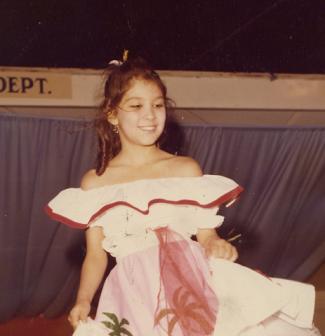
Ivette Huddleston performing for the Puerto Rican troupe in the Latin American festival
Photograph courtesy of Ivette Huddleston
What was the makeup of the area in terms of race, class etc?
It was mostly Caucasian families. I went to a Catholic school that was mostly Irish descent, and the Catholic High School I attended was mostly Polish. The masses I attended were all English, until the Hispanics that lived in the area decided to go to the pastor and request that they have a Spanish mass for them, so they were allowed to use the basement of the church to hold mass. Most of the families were lower middle, middle class. There were few Hispanics; I think my family was one of maybe 4 on our block which was a fairly large block.
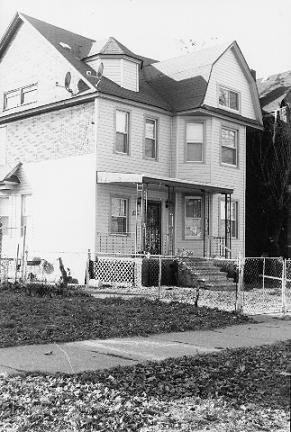
House on 2161 Morrell on Detroit's Southwest side
Photograph courtesy of Ivette Huddleston
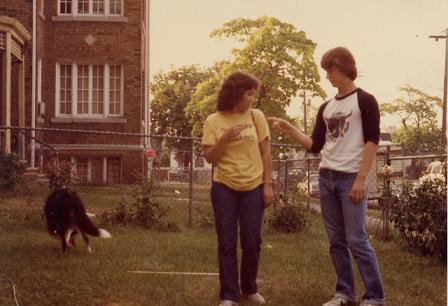
Ivette and Brian Huddleston in the front yard of 2161 Morrell
Photograph courtesy of Ivette Huddleston
What do you believe brought people there?
A lot of people as I stated earlier were dependent on the GM plant, they worked, and lived in their neighborhoods. There were jobs and the economy was good.
Can you recall any Latino owned businesses?
Mostly the restaurants in the district known as Mexican Town, there were only a few back then. Other than that there was a bakery named Luna's where Hispanics could purchase their Spanish fare. There were also a few Spanish markets sprinkled across the city. Not as many as there are today.
Do you see any changes now?
I have the opportunity to go to the city on a fairly regular basis since my iin-laws still live there. And yes I see a resurgence in the city that is very welcome. It's obvious that Hispanics of all backgrounds are coming together to revitalize the city. Today anywhere you go on the Southwest side you see people who care about their blocks, their businesses, their homes, a far cry from even a decade ago. Today I would estimate that out of every 5 businesses in the city 4 are Hispanic owned. Even the house I lived in as a young girl that was in the heart of the SW side, has been revitalized. It's been resided, new windows, new fencing etc... About the church I spoke of earlier, from what I understand the main mass is now in Spanish. I would say that the city is being saved by us; the Hispanic people who were shunned back then, now keep the city going. We keep it alive!
Interview with Carlos Ortiz Sr.
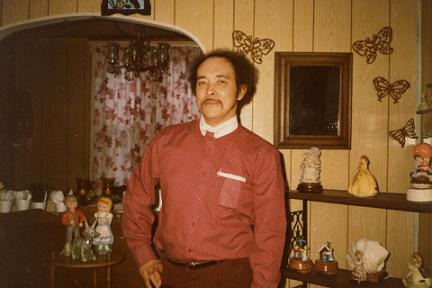
Carlos Ortiz Sr.
Photograph courtesy of Ivette Huddleston
When did you move to Southwest Detroit and why did you choose to move to Southwest Detroit?
1953. I was nine. I moved here with my dad and my step mom. They left Puerto Rico for better jobs and for a better way of living. The Southwest side was where everybody was. All the Latinos were there at the time. And that’s where the jobs were.
What was school like?
They taught me English. They had bilingual classes at the Dehoulton school on 17th and Porter, somewhere past Trumbull. After that I went to Neinas for what they call junior high and from there I went to Western High School.
Were there other Latino families in the area?
Oh yeah I knew a whole bunch. Every family that came from Puerto Rico or Mexico even, that’s where we were, we were together.
Where the other families welcoming?
We were cool with everyone but the white people. You could say they were racist. It was more of a black and Hispanic area than anything else.
What do you remember most about the area?
I can remember the Puerto Rican Club and the governor of Puerto Rico came here. He came here, he and his wife. A lot of families went there and they held dances and stuff. He stayed for the event. I know as a kid it was very exciting to go there.
What differences can you notice about the area today?
A lot of the buildings have been knocked down from where I lived. Now there are restaurants all over the place. You can’t go twenty steps without hitting one. Some positive changes, there are more jobs. They are service jobs but jobs nonetheless.
I liked the Southwest side; I was never crazy about moving out. With better police protection it could have been better.
Interview with Bartola Sherlund
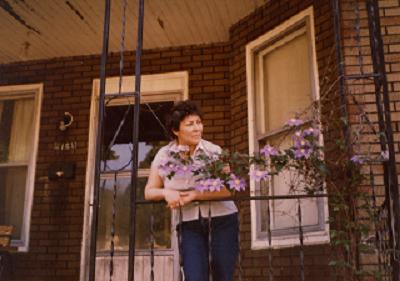
Bartola Sherlund at her residence on 2161 Morrell
Photograph courtesy of Ivette Huddleston
When did you move to Southwest Detroit and why did you choose to move to Southwest Detroit?
I came from Puerto Rico in 1962 and when I came from there, Southwest Detroit was the first place I went to live. My cousin actually lived there so I came to Michigan to live with her. I lived there for quite a lot of years, until 20 years ago. I got married there, I had my children there.
Why did you leave Puerto Rico?
No work in those days, there were hardly any jobs. I knew I couldn’t go to college because the opportunities were not there. In Puerto Rico in those days there wasn’t any money. For girls in those days, 1962, it was rough. I wanted to better myself a little bit. A lot of younger people were leaving, if they had the chance to come to the US they would. And I had that chance. Originally I was going to Chicago, I started hearing a lot of bad things about Chicago, the crime. Being a young girl without my parents, I talked to my cousin when she came back to Puerto Rico, she said Michigan would be better. Southwest Detroit in those days was good. It was not bad.
Were there other Latino families in the area?
Oh yes, quite a few. The Latinos were close. They had the Puerto Rican club and most did belong.
What do you remember most about the area?
What I remember most about the area…I liked the area, everything was close by. I came from the country and having to walk at least 10, 12 miles to get to the nearest road. I came here and saw how everything was so close. I could walk to the supermarket and church. The neighbors were nice. We had Latino people as neighbors and quite a few Americans .They were nice. They tried to talk to me and I did a lot of “mmmhm, and uhhuh” because I didn’t know a lot of English.
So how did you learn English?
I learned English from the TV. Your grandfather didn’t speak good Spanish. A lot of times he would thrown in English. I am very proud. I still have my accent but I am very proud I can write, read, and speak English. I guess you could say I taught myself.
What differences do you notice about the area today?
A big difference. Personally, I think the mayor doesn’t care about the city. He sits back in his mansion and forgets about the people there. The Hispanic community does try and I can see where they have come a long way. The whole Southwest side is practically a Spanish store. You can get Spanish products just about anywhere. I think Detroit has a lot of possibilities if the ones in office care. But it’s going to take a lot of people to change it.
Interview with Carlos Ortiz Jr.
When did you live in Southwest Detroit?
I was born in Southwest, so since 1971.
What do you remember most about the area?
I remember a lot of drugs going around, people selling drugs all the time. This was around the mid 1980s. A lot of gangs. There were a lot of Latinos, mainly Mexicans at my high school, Holy Redeemer. The crime rate was way up.
Can you remember any community events that were specifically for Latinos?
I can remember the carnival at Holy Redeemer. There were a lot of Latinos.
What differences do you notice about the area today?
More businesses have moved in there. The gang activity has gone down. The housing is improving. When I was there, there was a lot of crime, houses catching on fire every weekend, now things like that don’t really go on. Not a lot of fires, the crime rate is still there but not like it used to be. The Latinos are watching out for their people and property; they are looking out for one another.